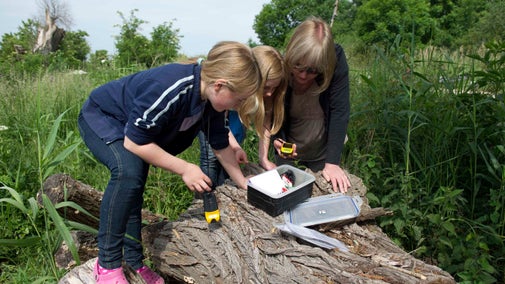
Discover more at Slindon Estate
Find out how to get to the Slindon Estate, where to park, the things to see and do and more.

Slindon Estate is made up of 3,500 acres of Sussex woodland, farmland, downland and pretty village all divided by paths, hedges, lanes and tracks. You can explore the estate through miles of public footpaths and bridleways on foot, bicycle or horse. Whatever the season, come to Slindon to look for wildlife, discover secrets in the village and take in the wide views of the surrounding landscape – right down to the coast.
In autumn and winter Slindon’s long history comes to light as archaeological remains become clearer on the landscape. A walk from Bignor car park will reveal Neolithic, Bronze Age and Roman features.
Walk up through the centre of the estate from the village and keep your camera on standby for those special hoar frost mornings or memorable snowfalls. Whether you wander out to the Downs or crunch your way through Park Woods, Slindon is magical in the winter.
With over 25 miles of public rights of way, there are plenty of walks to suit all ages and abilities. From hazel-shaded lanes and neatly cultivated fields to woodland and hedgerows, there's a walk for every season.
Slindon’s many bridleways and leafy lanes provide popular circular routes for cyclists and horse riders alike. Park at one of Slindon’s three car parks to start your mountain-bike adventure, while the Forestry Commission car park at Eartham has the space to unload your horse, ready to ride the trails.

Around Slindon village there are a number of interesting buildings and quirky features to look out for as you explore.
On Dyers Lane look out for the elaborate flint shed with a Slindon ‘ox blood’ red door. Built in 1805, the lock-up was used by the Parish Constable to imprison local troublemakers until he could march them to the magistrate at Arundel or Chichester.
The square flint-walled enclosure at the top of Mill Lane was a livestock pound. It was used to hold cattle and sheep that became separated from the rest of their herd while being walked to market. The unlucky herdsman would have had to pay to have them released.
On the corner of School Hill and Top Road is the old school. It was built free of charge in 1871 by the village farm labourers using flints gathered from the local fields. See if you can find the ale mug embedded in the flint work, put there by the local builders who enjoyed a drink over the hot summer of construction.
More than just a shop, the forge provides vital services to the village, helping it remain a vibrant community. It gives a new lease of life and public access to a historically important village building.
The parkland to the north of the village was originally a deer park dating from 1108. Around the edge of the park, a pale, consisting of a bank and ditches with a fence built on top, was constructed so that deer could enter from the outside but could not get out. You can still see the remains today.
Whether you're here for a walk, a cycle or to try your hand at geocaching (there are 10 hidden across the estate), Slindon Estate is a great place to get outdoors as a family and explore the beautiful countryside. How many things can you tick off your ’50 things to do before you're 11¾’ list?

At the most northerly tip of the estate you’ll find two of the highest points in the area: Bignor Hill with views down into the Arun Valley, and Glatting Beacon, topped with radio masts. With a hilltop car park, Bignor is an ideal location to enjoy dark skies and starry nights as you stand by the Bronze Age burial mounds and admire the views.
In October 2013, 75 hectares of ex-arable land at Northwood came into the care of the Slindon Estate, having been heavily farmed since the Second World War. The land was left disconnected, and a project has started to return the land back into woodland and connect the sections back together.
Come and discover Northwood for yourself – stroll through fields full of tree saplings, dip in and out of ancient woodland, sweep along grassy verges and watch Northwood begin to rise right in front of your eyes. The project area is located 1.5 miles north of Slindon village.

Find out how to get to the Slindon Estate, where to park, the things to see and do and more.

Discover the history of the Slindon Estate, in West Sussex. From Bronze Age burial mounds to fancy follies and the war effort, Slindon has a varied past.

Plan fresh-air activities, discover facts about nature and wildlife or learn a new skill with our suggestions for ‘50 things to do before you’re 11¾’.

Go geocaching – it's like a digital treasure hunt using a handheld GPS and a sense of fun. You can try it for free at many places we look after.



Plan a visit to one of the special countryside places in our care and discover the benefits of being in the great outdoors. Pack your walking boots and get ready to explore woodlands, valleys and rivers.

Discover the wide array of countryside settings around Sussex, from the highest point of East Sussex at Ditchling Beacon to the incredible rolling landscape of the South Downs.

Explore some of the finest landscapes in our care on coastal paths, accessible trails, woodland walks and everything in between. Find the best places to walk near you.